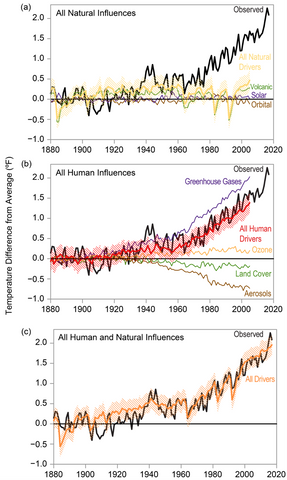
No More Snow in Pennsylvania
Hanna LeachTalking to almost anyone over the age of twenty, you’re likely to hear similar phrases about seasonal weather such as, “It doesn’t snow nearly as much as it used to,” or “Summer temperatures are beating new records every year,” or my favorite, “I thought I liked snow until that freak storm [in Texas] a few years ago.”
The weather is noticeably changing every year, getting warmer in parts of the U.S. we typically think of as cold, and colder in places we like to think of as warm. Dangerous weather incidents are getting more frequent, and it’s only going to get worse if we don’t address the primary cause: climate change.
The largest change concerning winter weather in Pennsylvania is the significant decrease in snow and increase in rain during the colder months. The stereotypical winter with long snow days and heavy clouds that most adult Pennsylvanians might recall is not going to be in the forecast anymore.
According to the United States’ Fourth National Climate Assessment, temperatures in the Northeast are “projected to be more than 3.6 degrees Fahrenheit warmer than during the preindustrial era,” by 2035. In the past, the overall global temperature took 5,000 years to rise 4 degrees, yet now it is 1.8 degrees warmer in only one century.
You might be wondering how scientists know what the temperatures were thousands of years ago! Fossilized plants are actually used to determine the average temperatures of past eras. The warmer the climate, the larger the plant's leaves. While fossil records show historically there were times on earth much warmer than now, NASA says “the paleoclimate record also reveals that the current climatic warming is occurring much more rapidly than past warming events.”
Because of fossil fuels, we’ve doubled the amount of CO2 in the atmosphere. CO2 actually absorbs the infrared radiation that the Earth emits, and “after these gases absorb the energy, they emit half of it back to Earth.” Therefore, the more fossil fuels that are emitting CO2, the warmer the earth gets. Since the levels of CO2 have been doubled, we've doubled the amount of heat trapped in the atmosphere.
Below you can see a series of graphs provided by the Fourth National Climate Assessment picturing the global temperature's significant increase due to mainly greenhouse gases like CO2.
Human and Natural Influence on Global Temperature, Fourth National Climate Assessment, U.S. Global Change Research Program
These rising temperatures affect our flora and fauna here in PA. The weather is now warmer in the transition from autumn to winter, and it turns warm again sooner than usual leading into spring. This causes the trees to bud sooner, which “followed by hard freezes has led to widespread loss of fruit crops and reduced seasonal growth of native tree species in the Northeast.”
Thankfully, there are things we can be doing to stop more CO2 from entering the atmosphere! Check out our blogs covering the WITF News climate action series for everyday simple steps to make your life eco-friendly!
References:
L, Emily. What Fossil Plants Reveal About Climate Change. Smithsonian Voices. https://www.smithsonianmag.com/blogs/national-museum-of-natural-history/2021/04/29/what-fossil-plants-reveal-about-climate-change/
L, Meryl. The link between extreme weather and climate change has never been more clear. National Geographic. https://www.nationalgeographic.com/science/article/scientists-accurately-pinpoint-climate-contribution-extreme-weather
How is Today's Warming Different from the Past? NASA Earth Observatory. https://earthobservatory.nasa.gov/features/GlobalWarming/page3.php
Fourth National Climate Assessment, Chapter 18: Northeast. US Global Change Research Program. https://nca2018.globalchange.gov/chapter/18/
Fourth National Climate Assessment, Chapter 2: Our Changing Climate. US Global Change Research Program. https://nca2018.globalchange.gov/chapter/2/
P, Sarah. 'How is climate change affecting winter weather in my region?' Yale Climate Connections. https://yaleclimateconnections.org/2020/02/how-is-climate-change-affecting-winter-in-my-region/
C, Renee. You asked: If CO2Is Only 0.04% of the Atmosphere, How Does it Drive Global Warming? Columbia Climate School. https://news.climate.columbia.edu/2019/07/30/co2-drives-global-warming/

